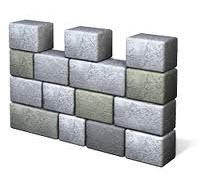These unwanted apps make false or exaggerated claims and can even damage computers. They could be antivirus software throwing up warnings about infection and asking you to buy a license to clean up the malware, or they could be PC Cleaners or Optimizers that show errors on your PC and require you to buy a license to fix the errors. While there are genuine softwares that does this – there are others too who may throw up false or exaggerated warnings to scare you. So you have to judge for yourself and take a call. Two of the most common behaviors shown by such unwanted software are:
1] Creating suspicion in PC user’s mind
The software which makes false promises inflict hazards on the PC that the user may not even recognize. One such hazard is when the program’s free version calls out errors and warnings in your PC without providing enough clarity on the actual errors or what exactly is wrong! Eventually, they ask the users to purchase the premium version of the application to clean the errors, leaving you somewhat confused about what exact benefits you will get if you buy. Even if you decide against purchasing the premium version, you are always left thinking you have unresolved niggling issues on your PC.
2] Removing Prefetch files unnecessarily
Prefetch files help Windows keep track of how your computer starts and which programs you commonly open. This information is stored as several small files in the Prefetch folder by default. The next time you turn on your computer, Windows refers to these Prefetch files to help speed up the start process. The prefetch folder is a subfolder of the Windows system folder. The prefetch folder is self-maintaining, and there’s no need to delete it or empty its contents. Windows cleans the Prefetcher at 128 entries down to the 32 most used application’s Prefetch files. But some software shows Prefetch files as errors that need to be fixed. Remember, if the contents of the Prefetch folder are deleted, Windows and your programs will take longer to open the next time you turn on your computer. Hence, these unwanted programs make your system slower. Read Potentially Unwanted Programs and how to avoid installing PUPs.
Windows Defender will block Unwanted Software based on these criteria
Microsoft has laid down some objective evaluation criteria that programs must follow if they want to be not classified by Windows Defender as an Unwanted Program. An update on new unwanted and unnecessary programs happens through a Microsoft-created worldwide network, where you can submit unwanted software for analysis. Participants in the network play a key role in helping identify new suspicious programs quickly. After analysis, Microsoft creates definitions for programs that meet the criteria and are available to all users.
Protect your PC from Unwanted Software with Windows Defender
The best way to protect your PC from such unwanted programs is to identify them. Microsoft has brought several security products to protect your PC; Windows Defender is one of them. Windows Defender has recently made quite good progress itself. It will now also help you identify unwanted software which makes false claims, as Unwanted, and block or delete them from your Windows PC. Now Read: Make Windows Defender protect you against Potentially Unwanted Programs.
How do I figure out if the software is legit?
There is no straight answer to this, but make sure you are downloading from the official website when you download the software. However, if you feel suspicious about a software, check if the resource consumption is high, and then check on the internet for the official website and reinstall it.
